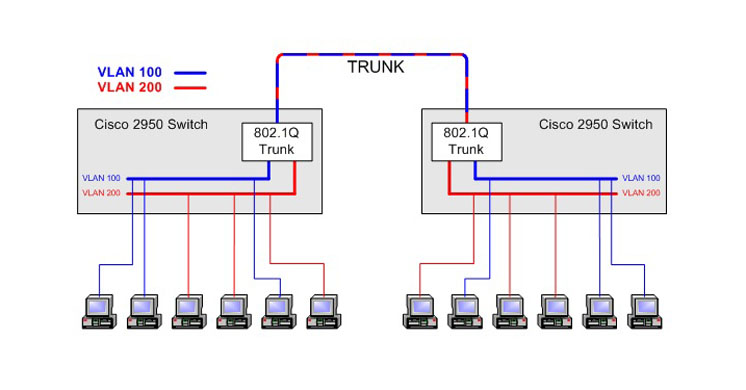Hello guys, in this article matob will discuss various things related to trunks. Have you ever heard the word “trunk”? The word “trunk” comes from the English language which literally means trunk.
However, this time we will discuss a different trunk, namely a trunk that is related to the concept of computer networks. Have you heard of it or are you interested in knowing more? If so, continue to follow this article until the end, because we will discuss starting from the definition, function, and types and explanations related to trunk links. Immediately see the following explanation.
Definition of Trunk
Trunks are communications designed to carry multiple signals simultaneously for the purpose of providing network access between two points. When referring to the term communication, trunking or trunk is a concept in which a communication system is able to provide network access for multiple clients by sharing a set of lines (rules) or frequencies, meaning that they are not assigned individually.
From the two meanings above, to then be connected with the concept of computer networks, trunks can be concluded as a concept of sharing access between networks. This access sharing utilizes various network devices, namely switches and with a set of agreed and defined rules.
This rule stipulates that not any component can access other components in other networks. If you look at the real or real case, the concept of this trunk, in a computer network, is carried out on a switch device. The switch was chosen because of its ability to read and assign any IP address that has been granted permission to access other computers on other networks.
An example of the application of the trunk concept is: If a port on a switch is set to switchport access mode , what happens is that the port can only be passed by one VLAN, namely the VLAN that has been assigned to that port. This is because it does not allow one port with access mode to assign to more than one VLAN. Then if the number of ports on a switch is no longer able to meet the needs of the number of PCs or computers, then the solution is only one, namely adding a new switch so that the number of ports also increases.
The question is, what if the switches to be connected consist of more than one VLAN for each switch? While on the other hand, using port mode access only allows to carry one VLAN only? Then the concept or trunk method is the answer and the solution used to overcome this.

Trunk function
The function of the trunk is to be a liaison between two switches that have configured VLANs. Trunk can be likened to a tree trunk that functions to connect the branches of a tree. While the branches are VLANs on this trunk concept. In addition to being a liaison, another function of the trunk is to limit access between networks, so that not just any component can access other components on other networks.
Explanation About Trunk Link
In a VLAN there are two modes used, one of which is the trunk link. Trunk link on a VLAN (Virtual Local Area Network) is a port that is configured to pass multiple VLANs. Port switches that use trunk link mode are capable of carrying many VLANs. The port in this mode will later become a trunk link if the port on the opponent’s switch has been set to trunk mode or dynamic trunking protocol.
Trunk link mode is generally used to connect a switch to a switch, a switch to a router, or when you want to connect a switch to a server. This mode is capable of supporting fast ethernet technology, which is 100Mbps and gigabyte, which is 1000Mbps. In different terms, this trunk link is also called a tagged vlan.
So this article is related to trunk. Trunk is part of a computer network system that plays an important role in communication between components, especially for sharing network access with the same set of rules. Thank you for following to the end, see you in the next article. Hope it is useful!
